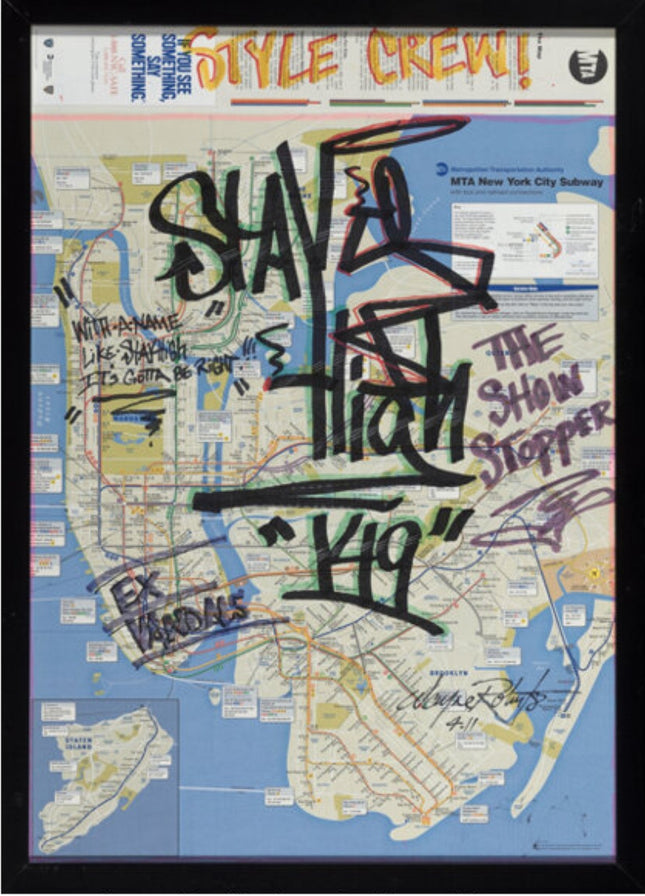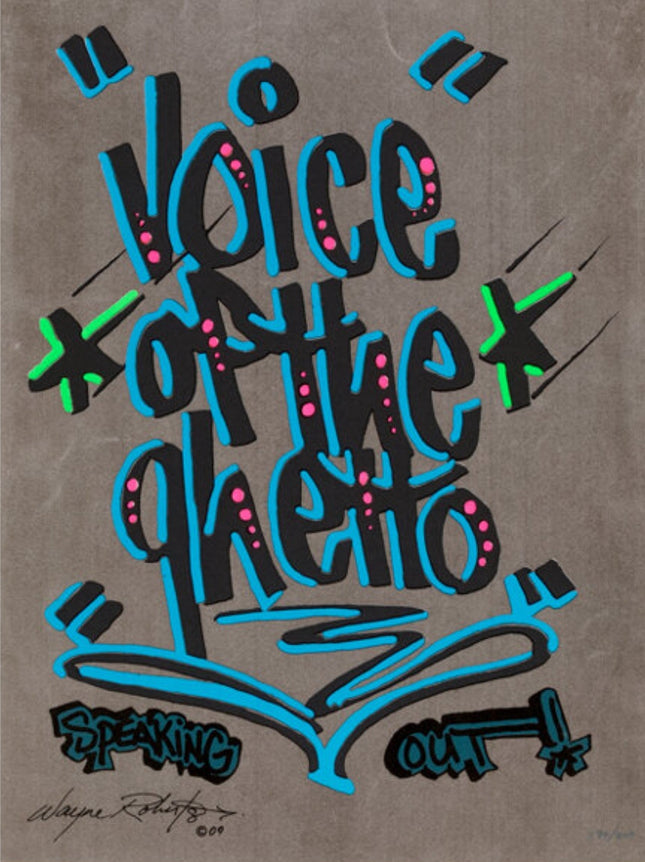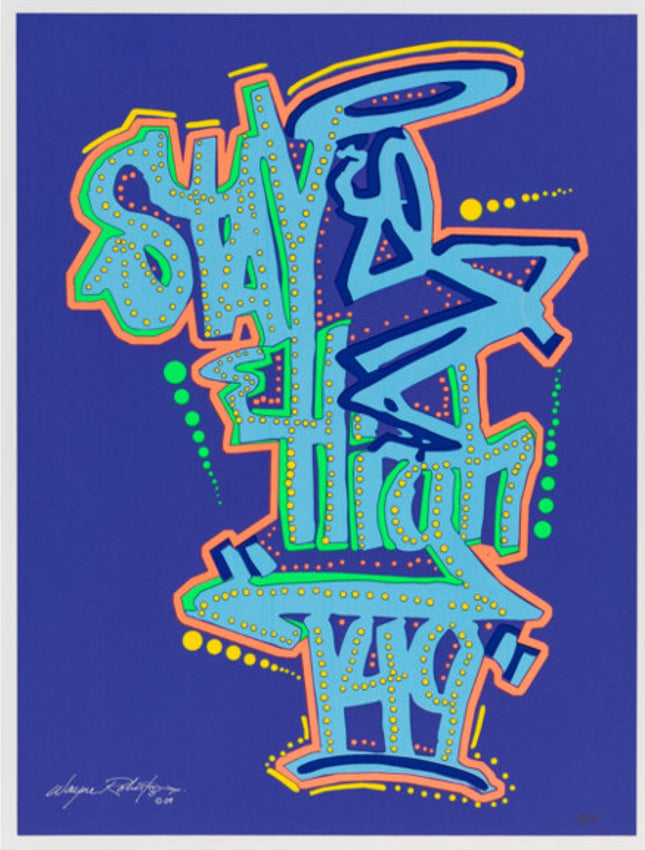Stay High 149: Innovator of Street Art
Wayne Roberts, better known by his graffiti name "Stay High 149," was an influential American graffiti artist who rose to prominence in the 1970s. Born in 1950 in New York City, Roberts began his graffiti career in the late 1960s and quickly became one of the most prominent figures in the emerging New York City graffiti scene. Stay High 149's iconic tag featured a combination of a smoking stick figure, known as "The Voice of the Ghetto," and the number "149." The figure was inspired by the TV show "The Saint," and the numbers represented the street he lived on in the Bronx. Stay High 149 was among the first graffiti artists to "bomb" or "hit" subway cars, painting elaborate and colorful murals on the exteriors of trains. His work quickly gained recognition and respect from fellow artists and the wider graffiti community. By the late 1970s, Stay High 149 had achieved legendary status in the graffiti world. However, as authorities cracked down on graffiti and increased vandalism penalties, he stopped painting illegally. In the following years, Roberts battled with drug addiction and homelessness but eventually overcame these obstacles. In the early 2000s, Stay High 149 returned to the graffiti scene, participating in art shows and events. He continued to paint legal murals and became a mentor to younger graffiti artists until his passing in 2012. Stay High 149's impact on the graffiti world is undeniable, and his work has influenced countless artists around the globe. Today, he is remembered as one of the pioneers of modern graffiti art and an essential figure in the history of New York City street culture. Stay High 149's innovative style and unique approach to graffiti art helped shape the graffiti movement in New York City during the 1970s and 1980s. His bold and colorful murals on subway cars attracted the attention of the public, media, and other artists, fostering a vibrant and competitive graffiti scene. As one of the original members of the graffiti movement, Stay High 149 inspired a new generation of artists who would push the boundaries of the art form even further. Some artists, such as Dondi White, SEEN, and Lady Pink, became well-known in their own right and contributed to the evolution of graffiti from a subculture to a legitimate and respected art form. In the years following his initial graffiti career, Stay High 149's work was exhibited in art galleries and featured in numerous books and documentaries about graffiti and street art. These include the seminal 1983 documentary "Style Wars," directed by Tony Silver and Henry Chalfant, showcasing New York City's graffiti movement during the early 1980s. Stay High 149's legacy lives on through the work of contemporary graffiti artists who continue to be inspired by his groundbreaking style and fearless approach to public art. His influence can also be seen in the rise of street art, which often incorporates elements of graffiti and has become a popular form of public expression in cities worldwide. In recognition of his contributions to the art world and his pioneering role in the graffiti movement, Stay High 149's work is now featured in the permanent collections of several major museums, including the Museum of the City of New York and the Brooklyn Museum. His life and career continue to be celebrated and studied by graffiti enthusiasts, art historians, and the public.
Stay High 149's Enduring Influence
Wayne Roberts, known as Stay High 149, was an influential figure in the graffiti movement of the 1970s. His distinct tag, featuring a smoking stick figure derived from the Saint John's Bread and Wine symbol and the phrase "Stay High," became a signature sight in New York City, symbolic of the burgeoning street art scene. Roberts' work transcended the world of illicit street writing to become a celebrated part of urban culture. His tags, characterized by fluid lines and the haloed figure, were not just acts of vandalism but were seen as early expressions of street pop art. They captured the rebellious spirit of the times and laid the groundwork for graffiti as a legitimate artistic practice. The impact of Stay High 149 on both street pop art and graffiti artwork is still felt today. His work is studied for its pioneering use of visual language and as a cultural artifact of a pivotal moment in New York City's history. Roberts passed away in 2012, but his work remains a touchstone for artists and enthusiasts of street art globally.








